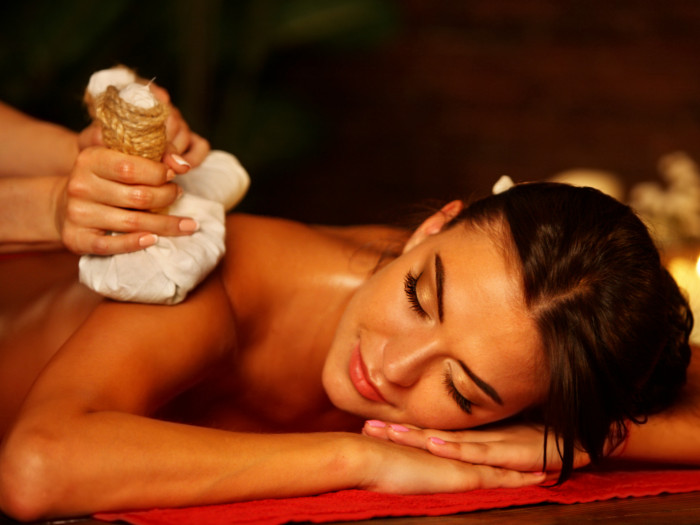Using a poultice can be a wonderful way to heal a number of topical conditions in a natural and effective way.
What is a Poultice?
A poultice is an ancient medicinal tool that consists of herbs and other ingredients made into a paste and placed directly on the skin. Basically, you want to create a soft, pliable mass that can be placed within a type of linen or cloth, allowing the ingredients to impart their benefits and draw out any toxins at the same time and reduce the occurrence of abscess or a cough. For thousands of years, cultures around the world have created poultices with clay, mud, herbs, spices, Epsom salts, activated charcoal, and dozens of other ingredients, depending on the desired effect of the remedy. [1]
Another word for a poultice is a cataplasm, and these are often placed on an inflamed or wounded part of the body for an extended period of time. These can reduce inflammation, heal wounds, treat insect bites, and cure skin diseases, among others. These poultices can also be placed on joints or muscles that are sore or aching.

An herbal poultice is an age-old remedy for body aches and pains. Photo Credit: Shutterstock
Types of Poultice
There are many common types of poultices, including those for spider bites, illness, warts, splinters and boils, and mastitis, among others.
Spider Bite
To treat spider bites, many people blend 1/2 tablespoon of activated charcoal, 1/2 tablespoon of Aztec clay, 1 tablespoon of ground flaxseed, and 1 tablespoon of dried plantain leaf. Add some water to form a paste and apply it directly to the site of the bite to draw out the toxins. [2]
Arthritis
Arthritis is the inflammation of one or more joints and rheumatism is the aches and pains of the muscles and joints. These two are some of the oldest health problems known to mankind, and it is sufficient to say that there has been an amalgamation of purported ‘remedies’ put forward over the years.
In such cases, poultices have always been popular to reduce swelling of the joints. Ingredients such as fresh ragwort leaf, turnip, cabbage, and coltsfoot boiled in milk with oats have been used. Other external applications include a liniment of cloves and alcohol, crushed garlic mixed with linseed oil, hot wool, and raw potato juice.
Diabetes
According to recent research, people with diabetes, often the elderly, are more prone to poor circulation in their extreme conditions, and as a result, frequently develop ulcers on their legs or feet. Often the ulcers become infected, and, tragically, the individuals are faced with losing their toes or worse. In such cases, one should apply charcoal as a poultice if inflammation is on the outside of the body. Along with a healthy diet, this remedy works wonders and helps the individual get rid of the infection.
Cysts
Cysts are small bumpy structures that can contain fluid, pus, or gas. These are common and can occur anywhere on the body. Cysts are often caused by a bacterial infection, clogging of sebaceous glands, or around earrings. A topical application of a warm poultice to a cyst speeds up the healing helping it to drain.
Warts
Mix ground flaxseed, flaxseed oil, and a small amount of honey to a poultice and then somehow bind it to the site of the wart for 4-6 hours. [3]
Splinters/Boils
You want to mash together equal amounts of soap and sugar before applying them directly to the site of the boil. Place a large bandage over the area and keep it in place for 24 hours, keeping it away from water. [4]
Onion Poultice
An onion poultice is very effective for treating illnesses in children. You can simply place diced and sauteed onions between two pieces of cloth and apply it to the chest or back for best results.
Mastitis
Many women find relief from tender or painful breasts with a combination of rosemary, dried fenugreek seed, comfrey, and dandelion. Applying this to the breasts can reduce pain and tenderness. [5]
Magnesium Poultices
Blending epsom salt and baking soda into a poultice can be a great way to draw out infections and speed the healing process on a given part of the skin. [6]
General Illness
Poultices are generally known as detoxifying tools that can help improve overall health, so you shouldn’t ever be worried about applying a poultice on the body, as it can relieve strain on the immune system.
How to Make?
Depending on what type of poultice you want to make, and what potential health benefits you are seeking, your poultice may be different.
- Poultices are generally made by grinding certain herbs and turning them into a paste by adding water or certain oils.
- You can then collect this paste into a piece of muslin, linen, or waterproof cloth, tied off and then placed directly on the site of your injury, insect bite, or area of inflammation.
